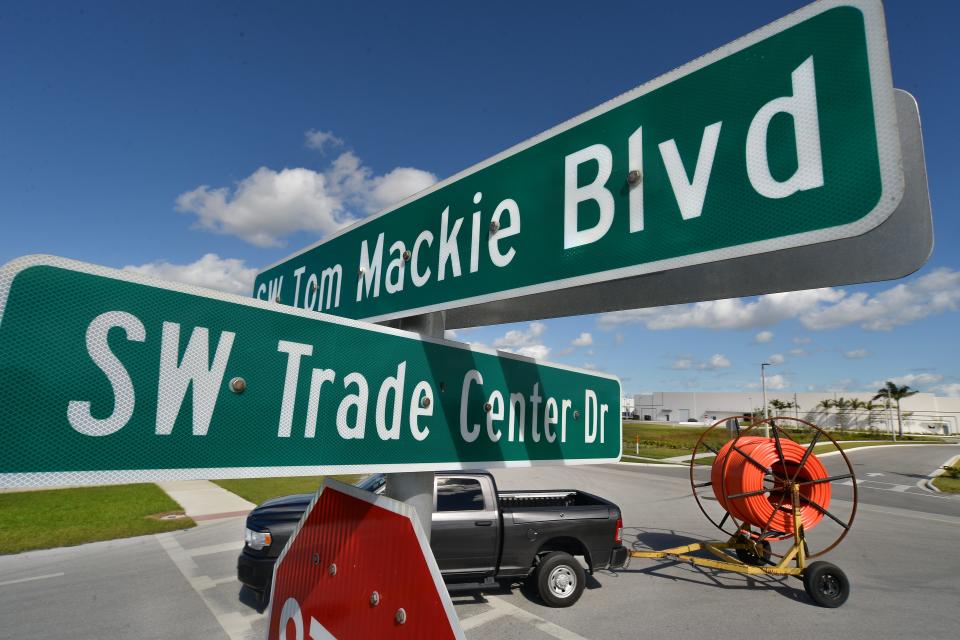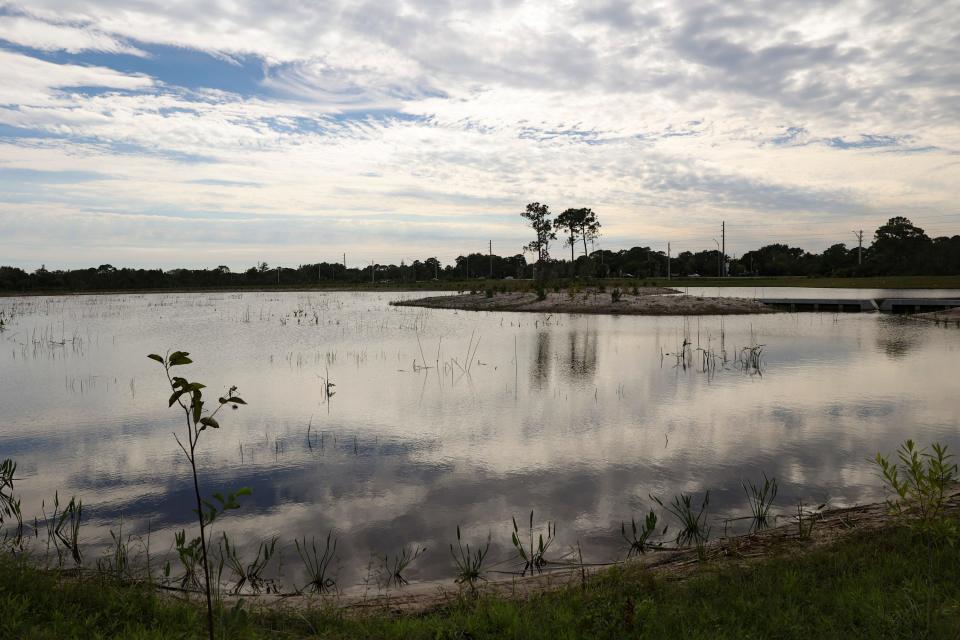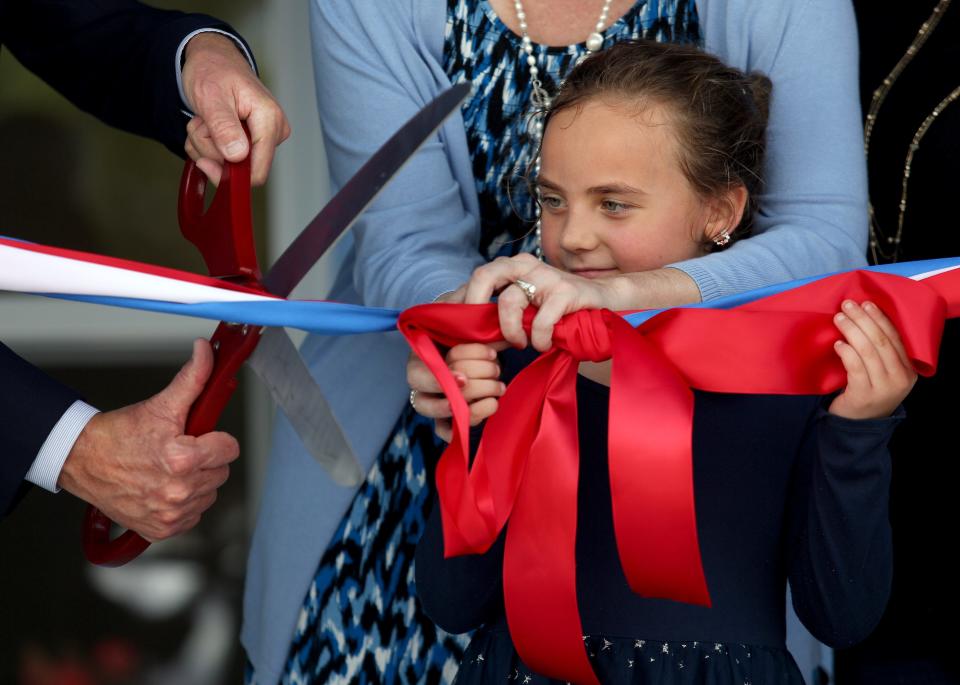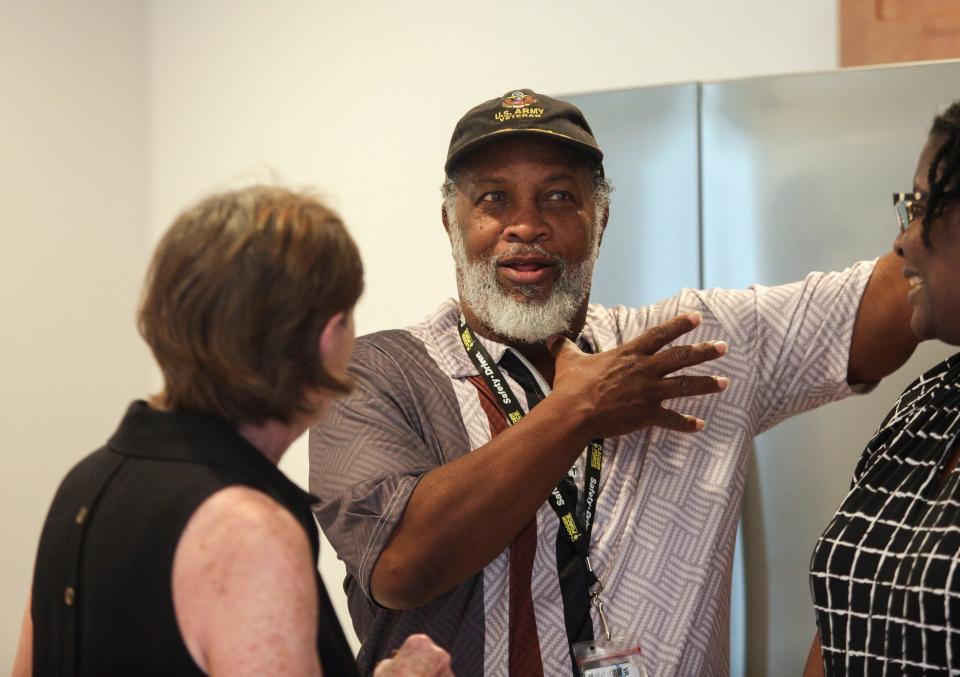What would you do with $190 million? Here's what Treasure Coast governments are doing
Treasure Coast cities and counties are in the midst of spending a nearly $190 million windfall on everything from street sweepers to housing to infrastructure. The cash is coming from the federal American Rescue Plan, a coronavirus-relief program passed by Congress and signed into law in 2021.
The $1.9 trillion plan provided money to individual households and $350 billion to states, cities, counties and tribal governments across the country. The most money on the Treasure Coast — $63.8 million — went to the largest government, St. Lucie County.
Spending on utilities and water quality has been the focus, in St. Lucie County, county spokesman Erick Gill said.
The county has yet to start any projects, but expects some to get under way in the next two to three months, Gill added.
The largest is the $6.2 million Okeechobee Road water main and sewer project, stretching from West Midway and Okeechobee roads to the Seminole Tribe of Florida's land in central unincorporated St. Lucie County.
Other spending in St. Lucie County
Port St. Lucie is spending $5.9 million to develop Tom Mackie Boulevard, part of the jobs corridor west of Interstate 95 and east of SW Village Parkway.

It's the largest amount for any project being done in county with money from the American Rescue Plan.
"A key priority of the City Council" is providing job opportunities in Port St. Lucie for residents, said Kate Parmelee, city director of strategic initiatives and innovation.
The money will help Port St. Lucie construct water, sewer and storm water lines to attract businesses that pay high wages.
When Congress passed the American Rescue Plan, the $350 billion for local, state, and tribal governments allowed them to replace lost tax revenue and provide money for local initiatives, including infrastruture, following the economic collapse caused by the pandemic.
In Fort Pierce, funds were or will be used for a variety of projects from helping homebuyers with down payments to making repairs to the sewage system at Little Jim Bait & Tackle, a waterfront restaurant and bait shop that sits on city-owned propertyt, city officials said.
"It was an important infusion of cash," said Mayor Linda Hudson, which helped the city get through a rough, uncertain time.
"The city of Fort Pierce was able to help citizens directly with the financial demands on them, like rent and utility assistance, Hudson said in an email.
Fort Pierce was also able to provide its Police Department with body cameras and drones, among other things, and continue and to improve city services, Hudson added.
The Seminole Tribe, which owns land west of Fort Pierce and Interstate 95, received $2.2 million from the American Rescue Plan.
The tribe is spending a large percentage of that money on advanced mobile medical equipment, said Gary Bitner, a spokesperson for the tribe.
Martin County spending
Martin County received about $31 million and will spend some of it on a project already underway in Hobe Sound.
The East Fork Creek storm water treatment area project is Martin County's largest American Rescue Plan project, with $2 million allocated to help improve water quality in the St. Lucie Estuary.

"This project will create a positive economic impact for the community by utilizing contractors and creating job opportunities in the area," said county spokeswoman Martha Ann Kneiss by email.
"By improving water quality in the St. Lucie Estuary, the project will" benefit local tourism, Kneiss added.
Stuart's largest American Rescue Plan project is the reverse-osmosis water-treatment plant, which the city started building before it sued 3M for more than $100 million over water supply pollution.
Stuart settled its part of the suit for an undisclosed share of $10.3 billion..
The city is spending $2 million of the $8.1 million it received from the plan on the plant.
Indiantown received the next-highest allocation at $3.6 million. Sewall's Point got $1.1 million.
Indian River County's allocation
Indian River County, like Martin County, was allocated $31 million in the American Rescue Plan.
Of that, $11.5 million is expected to be spent on water-and-sewer and internet infrastructure. Nearly $6.3 million has been spent on internet technology.

Indian River County also spent millions responding to the pandemic, including buying personal protective equipment, providing sick pay, making upgrades to its information technology infrastructure and promoting tourism, according to county records.
And three homeless veterans will soon be housed thanks to $180,000 the county gave to the Coalition for Attainable Homes in Vero Beach. The coalition built a triplex for the veterans. Two have moved in, and one is waiting for housing assistance.
"It was a really good example of a public-private partnership," said Julianne Price, a member of the coalition board.
The Johns Island Foundation contributed $200,000 toward the project, which cost more than $450,000, Price said.
Cities such as Vero Beach and Sebastian received millions from the American Rescue Plan, too.
Vero Beach used $2.1 million of its allocation to cover tax revenue lost when businesses closed and workers in industries like food service and travel were temporarily out of work.
About $1.5 million covered Police Department payroll, and at least another half-million paid for storm water improvements.
Vero Beach also bought a street sweeper, and plans to use it to help keep vegetation and contaminants out of the Indian River Lagoon.

A budget hearing's big reveal: Growth is costing Treasure Coast taxpayers a lot more money
St. Lucie County to further reduce millage rate after public outcry, taxes to still go up
A street sweeper is the "most cost-efficient nutrient-removal operation we have available" to protect waterways, said Public Works Director Matthew Mitts.
Vegetation such as leaves turns into muck in the water, killing seagrass, Mitts said.
The money Vero Beach received also kept the city's storm water utility fee lower than it otherwise would have been, he said.
Keith Burbank is TCPalm's watchdog reporter covering Martin County. He can be reached at keith.burbank@tcpalm.com.
This article originally appeared on Treasure Coast Newspapers: Local governments share details of their COVID-19 relief spending

